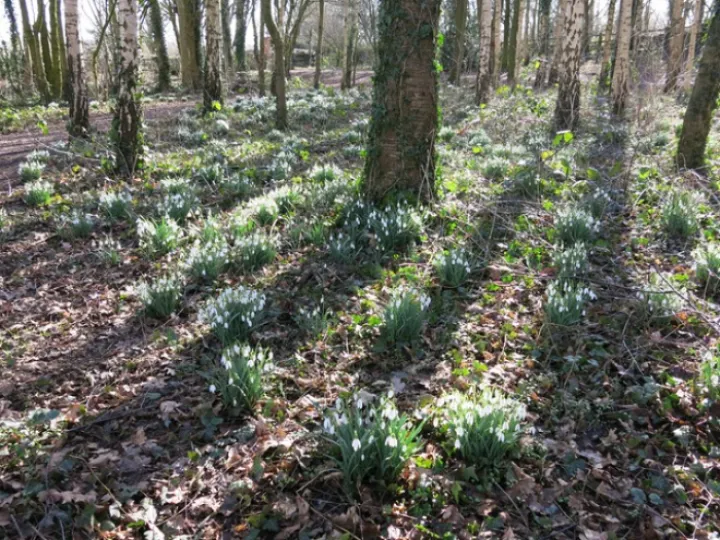Woodland Flowers in Winter
From Charles Bradley, Tarvin Community Woodland Trust ....
The beginning of a woodland year.
I bet that there isn't one of us who hasn't noticed that the days are getting longer! Close to Christmas, it was going dark soon after 4pm, but now it's well past 5pm before we need the lights on – and the changed day length is becoming more evident day by day. It makes a huge difference to me, and I'm sure, to many others! Could it be a harbinger of Spring?
The plants in our woodland are also very much affected by the changes of day length. Even before the average temperatures have begun to rise, the plants will begin to respond to the extra light, and we will begin to notice first one and then another start to change and develop. The first (and probably the most obvious) one will be the Snowdrop (Galanthus nivalis), which begins to grow during the shortest days and whose first flowers appear in the gloomy days of January. By February, the woodland is full of them, thanks to the dedicated efforts of Jim and Sheila Grogan initially and then the ongoing work of our volunteers. So successful have they been in multiplying the tiny bulbs that we have started to get mentions amongst the local "snowdrop walks"! It is wonderful to see the tiny, white heads brightening the gloom amongst the trees!
While trees with protective waxy outer layers over their leaves (such as holly – Ilex aquifolium) are able to retain their leaves throughout the winter, most of the broadleaf trees do not. However, that does not mean that they are all inactive at this time of year. The Hazel (Corylus avellana) trees and bushes will be developing the very visible catkins: their equivalent of flowers. The long, pendulous, yellow tassels gradually ripen to produce the yellow, airborne pollen – the male bit in reproduction – and this is carried off on the wind to fertilise the female bit. But what – and where – IS the female bit? Often missed and frequently disregarded, the female part, the bit which will develop into the hazel nut, is a small bud on a stem, close to the catkins. It has tiny red threads protruding from its' top. The red threads are the pistil: the sticky landing pad for the pollen, so that the male cells can work their way down and one can fertilise a female cell and begin to form the nut. When you next look at a hazel bush in January, February or March, try to spot the small, red-tipped buds on the stems, close to where the catkins are hanging.
Hazel is not alone in producing its flowers before its leaves. The Blackthorn (Prunus spinosa) (sometimes confused with Hawthorn, but with spines that are MUCH more spiteful!) has masses of gorgeous, white flowers in late February and March; long before the leaves have developed. Indeed, when a blackthorn hedge is in flower, it can look as if it is covered with snow, resulting in the expression, a "blackthorn winter".
At times, it may be difficult to find hazel catkins or blackthorn flowers on hedges in the woodland. Both produce their "flowers" on wood which grew LAST year and so, where a hedge has been trimmed to keep it tidy, the buds that might have borne the "flowers" may have ended up in the trimmings! Hopefully, though, there should be one or two good examples of both hazel catkins and blackthorn flowers somewhere in the woodland that have been deliberately left so that people can enjoy them!
Quick Links
Get In Touch
TarvinOnline is powered by our active community.
Please send us your news and views.










